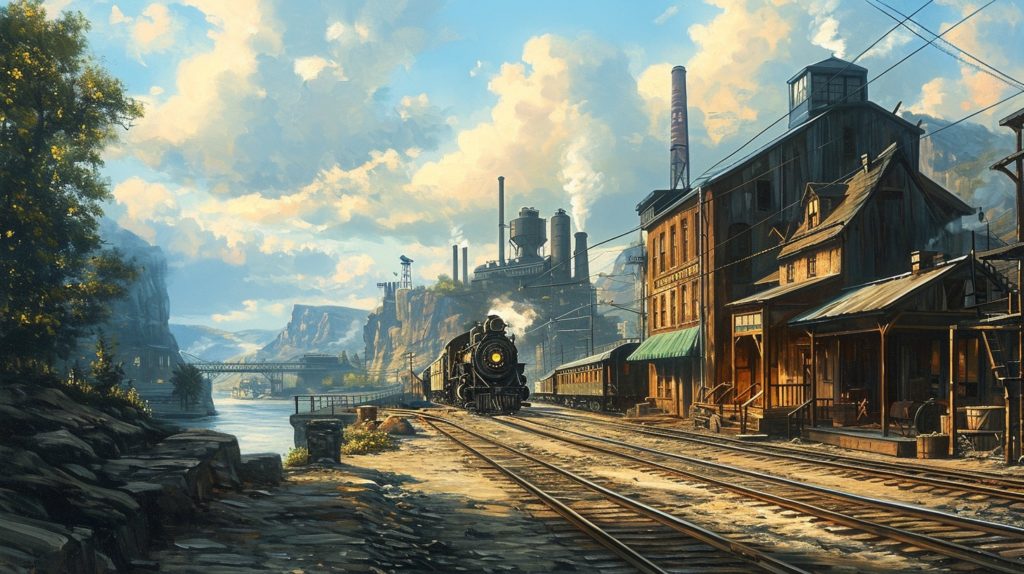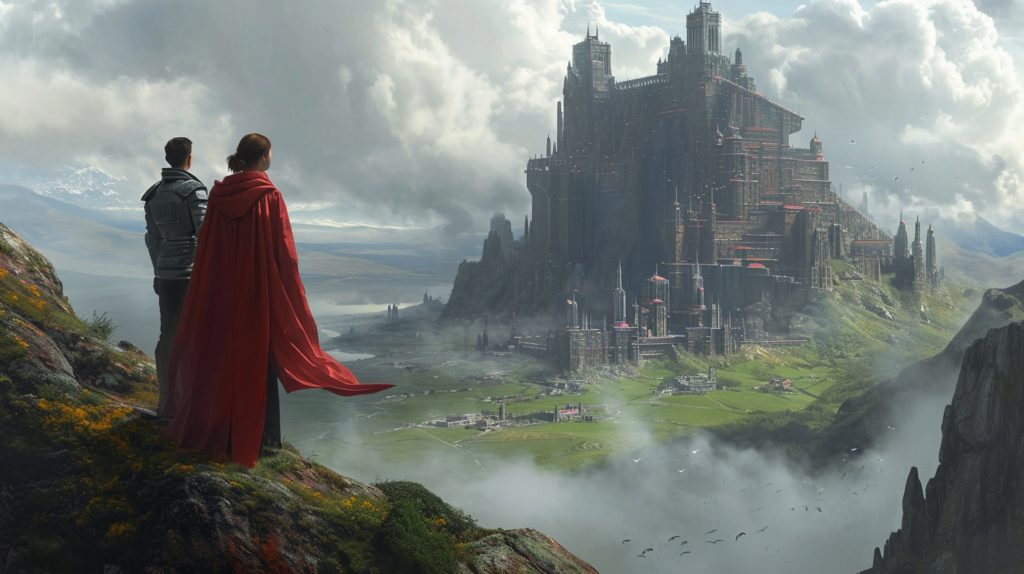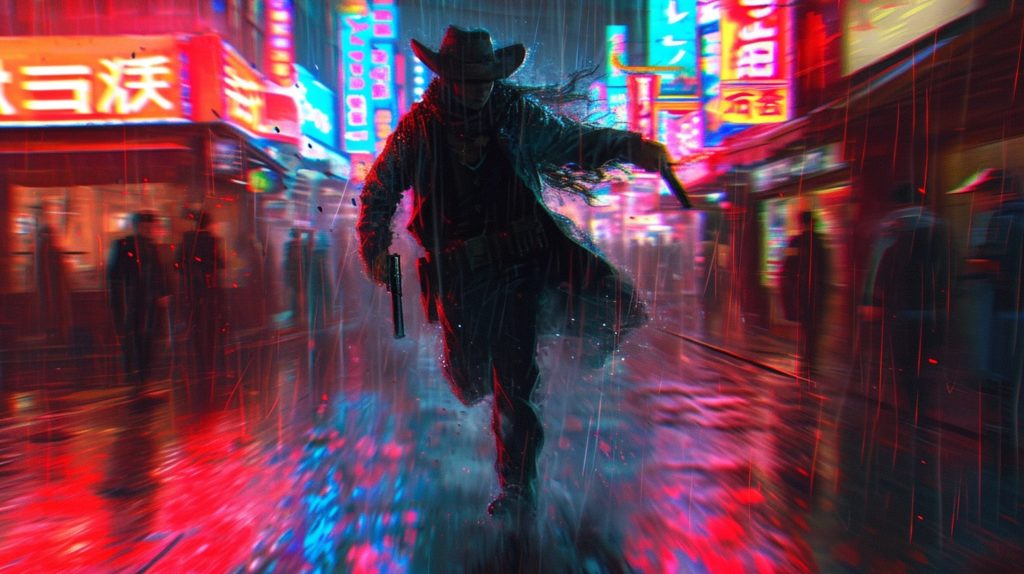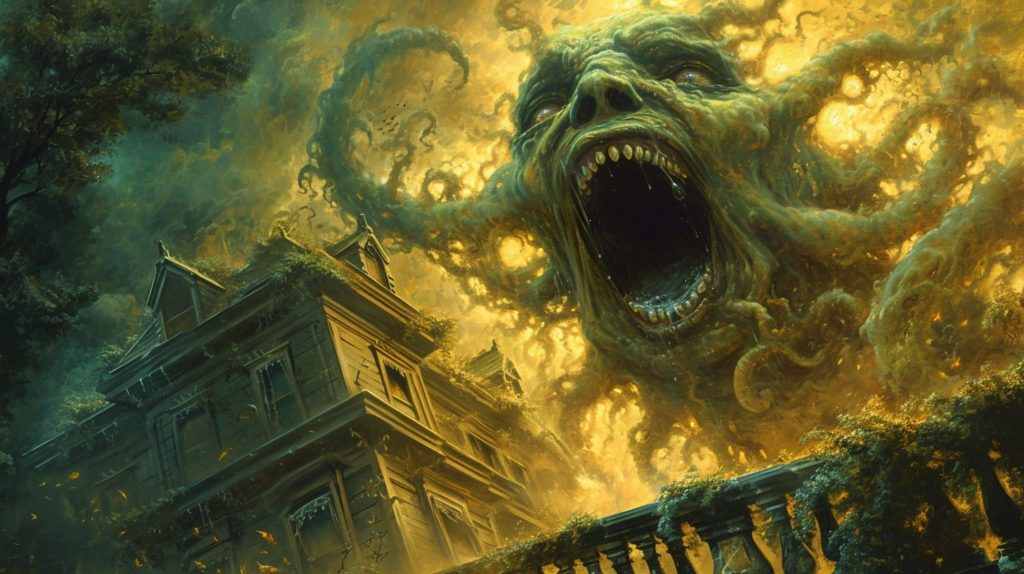
When it comes to the art of genre blending, I consider my fictional world, the Creedverse, prime example of how mixing elements from different genres can create a cohesive and organic milieu. Rather than merely mashing various genres together, the Creedverse weaves them into a seamless narrative. Let’s delve into how the mix of steampunk, western, and zombie elements work together to form my unique weird western world.
(The Creedverse is the weird west setting for my series, The Adventures of Bodacious Creed, several short stories, and my upcoming trilogy, The Anna Lynn Chronicles. Two of those stories are available, for free. Just check the sidebar!)

Steampunk and Western: A Natural Confluence
The Creedverse is set in an alternate timeline, and in the Wild West. That’s the same period when most steampunk fiction takes place, aka., the Victorian era in the U.K. Steampunk isn’t confined to the geographical boundaries of England but extends to the global stage of the time, including the United States and its Wild West, which allows for a natural fusion of steampunk and western elements.
In the Creedverse, you won’t find the steampunk aesthetic shoehorned in for mere visual appeal. Instead, it’s integrated into the fabric of the society, influencing everything from transportation to practical appliances to weaponry. The presence of steam and ether-powered machinery alongside horses and revolvers isn’t just plausible; it’s a reflection of the era’s innovative spirit.
The Organic Emergence of Zombies
The introduction of zombies in the Creedverse isn’t a random twist or a forced element to add shock value. It’s a logical extension of the world’s technological advancements. In this universe, zombies aren’t products of magic or a viral outbreak. Their existence is a direct consequence of steam-era technology, particularly the pursuit of resurrection.
Take the character of James “Bodacious” Creed, for instance the titular zombie in Bodacious Creed: a Steampunk Zombie Western. His resurrection through steam-era technology gives him traits reminiscent of zombies, such as enhanced strength and a ghostly complexion. However, he retains his intelligence and personality, setting him apart from traditional zombie portrayals.
On the other hand, the Creedverse also includes zombies that align more with the Romero-style, mindless creatures hungry for flesh. These beings are not anomalies but the result of imperfect resurrection technology. In fact, the people who resurrected Creed are the only ones who have mastered this technology. This highlights the complexities and dangers inherent in pushing the boundaries of science.
So, in the Creedverse, the blending of steampunk, western, and zombie genres isn’t a mere juxtaposition of disparate elements. I hope others see it as a thoughtful and organic integration that enriches the narrative. The technological advancements of the steampunk genre naturally extend to the setting of the Wild West, and the foray into resurrection technology logically leads to the emergence of zombies.

Beyond the Creedverse: A Universal Approach
So, that’s a good overview of how I’ve handled the art of genre blending in my Creedverse. This technique can be a powerful tool for storytellers across various genres, including fantasy, mystery, horror, and science fiction. It’s not just about combining elements from different genres but about weaving them together in a way that feels natural and enhances the story.
Creating Unique Worlds
Here are some genre blending, or bending, ideas to explore.
- Fantasy and Modern Settings: Imagine blending high fantasy with a contemporary urban setting. Elves with smartphones and wizards in business suits can create a world that feels both familiar and fantastical, as long as the magical elements are integrated into the fabric of modern society. Perhaps the capabilities of their technology arise from magic inherent in the world. In that case, what might fuel their technology, and what might be the price of widespread use of this magic?
- Science Fiction and Historical Eras: Science fiction elements like time travel or alien encounters can be organically incorporated into historical settings. The key is to ensure these elements influence the historical context in believable ways, shaping the society’s culture, politics, and daily life.
- Horror and Mystery: Combining horror with mystery requires a delicate balance. The supernatural elements of horror should serve the investigative narrative of the mystery, adding depth and complexity to the plot rather than overwhelming it. Stephen King is a master of this sort of story.

Character-Driven Stories
In any genre blend, characters play a crucial role. In fact, stories are always about people (which can mean aliens, fantasy species, and even animals with anthropomorphic personalities). Their reactions, beliefs, and interactions with the genre elements must feel authentic. A character’s journey can be an excellent vehicle for exploring the blended world, revealing its nuances and complexities organically.
Cohesive Plot Development
The plot should interweave elements from the different genres in a way that feels natural, one piece arising from the last. In a science fiction-romance, for instance, the technological aspects might directly impact the romantic storyline, creating challenges and opportunities for the characters’ relationships.

Respecting the Genres
While blending genres, respect the core elements that define each genre. In a mystery-fantasy, for instance, the rules of the magical world should not overshadow the logical progression of the mystery. However, the magic should be integral to it. Think of some of the plotlines in the Harry Potter series as examples.
Organic genre blending is about creating a world where different elements coexist and influence each other in a way that feels inherent to the story’s universe. It’s about building a setting and narrative where the combined genres enhance rather than compete with each other, leading to innovative and captivating storytelling. For writers, this approach opens up limitless possibilities for creativity, allowing them to craft unique stories that resonate with a wide range of audiences.
“All genres are worth perusing,” Zander said without missing a beat. “I don’t believe in declaring a whole subset of novels unworthy. You never know what treasures you might be missing.” ~ The Omega’s Fake Mate